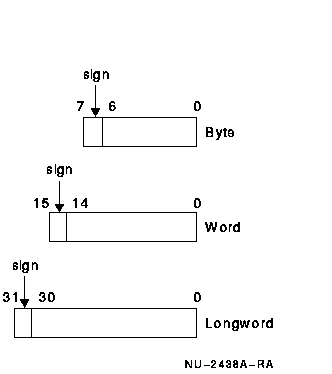The following figure shows the internal representation of fixed-point binary data. Storage for fixed-point binary variables is always allocated in a byte, word, or longword. For any fixed-point binary value:

- If p is in the range 1 through 7, a byte is allocated.
- If p is in the range 8 through 15, a word is allocated.
- If p is in the range 16 through 31, a longword is allocated.
